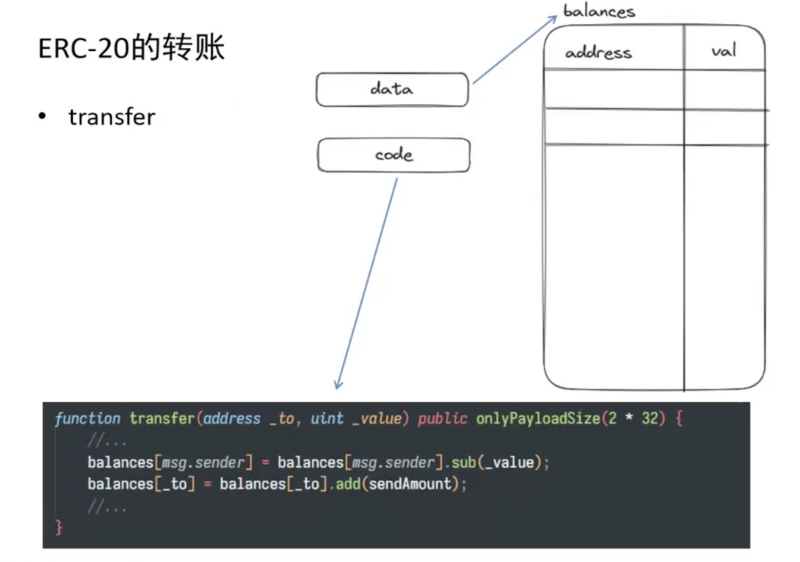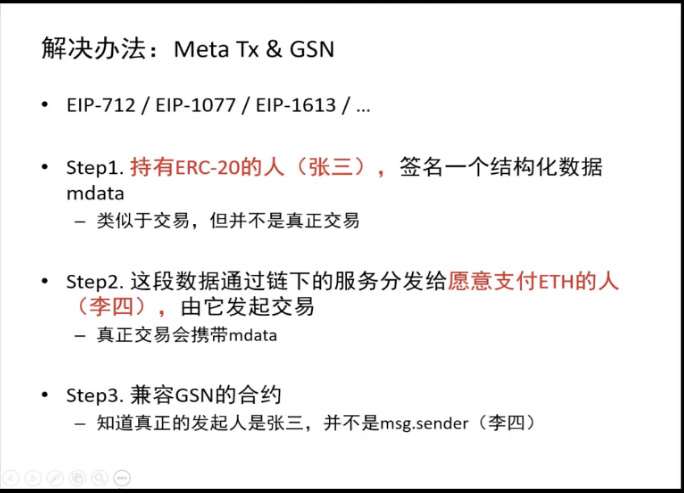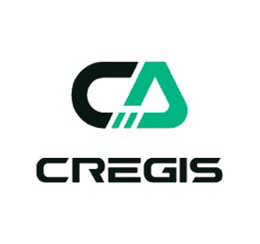Before discussing the value of Account Abstraction (AA), it is necessary to review the Byzantine problem and the pain points of Ethereum.
In traditional Internet, when A pays B for online shopping, two things happen: 1. A transfers the value of money to B, which is value transfer; 2. A notifies B of the payment of one dollar. From the perspective of information, A loses one dollar and B gains one dollar, and A will receive a certain product. Only when the above three pieces of information are confirmed at the same time, an online shopping order is considered complete. How to synchronize the above three processes can be understood as the Byzantine problem.
Bitcoin or the Byzantine problem aims to achieve atomic operations in the Internet or computer environment, that is, value transfer and information transfer occur at the same time. However, Bitcoin, based on its decentralized idea, cannot construct a complex Internet environment.
In 2012, when Vitalik Buterin was not yet famous, he proposed to add Turing completeness based on Bitcoin to achieve more functions. After being rejected mercilessly, he established the Ethereum ecosystem. Although the birth of Ethereum and smart contracts has taken the blockchain world to a new height, Ethereum running in a decentralized environment still faces the biggest pain point: linear environment cannot execute high-concurrency and complex code compilation. This is why V God has always encouraged users to enter the layer 2 network, advocated contract wallets and account abstraction, and even encouraged users to give some privacy to the project in exchange for social login, social recovery, and other user experiences close to Web 2.0. The reason: If Ethereum does not make these changes, it cannot achieve its vision and will forever be just a derivative of Bitcoin.
Core topic 1: What is Account Abstraction?
Ethereum public chain has two types of account: External Owned Account (EOA) and Contract Account (CA). EOA is characterized by being free to create and can initiate transactions directly through signature. CA, on the other hand, has its own code and data area, essentially being a smart contract, so it cannot initiate transactions directly. Because creating a contract account = creating a smart contract = executing on-chain interactions, it requires a fee. (This is the reason why V God previously mentioned the creation cost of CA wallets in the debate about MPC wallets and CA wallets was $xx USD). When EOA sends an asset to CA, theoretically this CA can become an Account Abstraction (AA) wallet.
Account Abstraction (AA) wallet can be understood as a decentralized "bank". EOA can place assets in this "bank" and when a transfer is needed, it only needs to inform the "bank" to complete the transfer operation. In this way, the value transfer and information transfer no longer occur simultaneously on EOA, but on an abstract account. Of course, these transactions still need to be sent and signed by EOA.
Key Topic 2: How is the functionality of Account Abstraction implemented?
With the content update of EIP-4337 protocol, the hype (or idolization) of the concept of Account Abstraction in the capital market has reached its peak, among which the most famous are concepts such as "social login", "social recovery", "strange device recovery", and "fee-less transfer". However, the contract account (CA) itself is a decentralized product, and the operation of asset on-chain transactions still needs to be signed and executed through EOA. Therefore, the "social login/recovery" conducted through web 2.0 information, biometric information, and identity authenticators and other tools inevitably requires the cooperation of centralized services. (This is also the reason mentioned earlier that "V God even encourages users to relinquish some privacy in exchange for a user experience close to Web 2.0").
However, the controversial feature of "strange device recovery" in EOA wallets (e.g. the private key recovery service previously launched by Ledger wallet) can be achieved in CA wallets by writing backup EOAs into the smart contract, without the need to provide any sensitive information to the wallet operator, and without having to surrender any privacy information. Therefore, it is even more secure than the recovery feature introduced by EOA wallets.
Finally, how is "fee-free transfer" achieved? First, pay attention to an important point: CA Wallet and Account Abstraction (AA) Wallet can currently only run on public chains that support EVM, and the main battlefield is undoubtedly Ethereum. As we all know, before the execution of the EIP-1559 proposal, Ethereum's POW miners could freely choose to include a transaction on the chain without charge. However, after the EIP-1559 proposal was implemented, the base fee, which is burned through deflation, must be paid, resulting in the absence of truly free transactions on the Ethereum network. Next, Cregis Research will analyze in detail how AA Wallet achieves "fee-free transfer":
First, taking the USDT smart contract as an example: it contains a code area and a data area. The data part can be understood as a table, which records the amount of USDT owned by each EOA, that is, the balance of each EOA. When transferring, the balance of one account will be deducted, and the balance of another account will be increased.

At this time, let's think in the context of game-fi or social-fi: the project hopes to reduce the entry barrier and allow users to participate without holding gas fees. Although current Ethereum EOAs cannot achieve this, smart scientists still think of an indirect solution: Meta Tx & Gas station network (GSN). The principle is that a token trader (Zhang San) signs and executes a structured data (mdata) similar to a transaction, and then sends it to someone willing to pay the gas fee (Li Si). Li Si sends the transaction containing mdata to a GSN-compatible smart contract for execution, pays the on-chain gas fee, completes the transfer, and the consensus nodes of the Ethereum network confirm that Zhang San is the initiator of the transfer.

The above solution is an important part of the proposal EIP-4337. The EIP-4337 proposal is a transaction optimization plan that does not change the Ethereum consensus layer: when a user wants to initiate a transaction, they only need to pass a message (msg), but this msg is not sent to the Ethereum mainnet, so the user does not need to pay gas fees. This msg will be sent to a memory pool, where it will be authenticated according to the EIP-4337 standard. If everything is correct, it will be published on the Ethereum chain by the operator's EOA and finally recorded in a block by the POS node. In addition, the EIP-4337 proposal also includes a set of standards for the benefits that packers can obtain, as well as how to refund in case of packing failure. PS. If a method is added to the EIP-4337 proposal to hide the association between the operator's EOA and the msg, it will also be able to achieve privacy transactions.

EIP-4337 Proposal: A solution that does not change the Ethereum consensus layer
Solving the Mystery: Account Abstraction (AA) Wallet = Contract Account (CA) + Off-chain Communication Standard
From the analysis so far, I believe everyone understands that although the content of the EIP-4337 proposal may take 11 to 13 months to be fully completed, the Account Abstraction (AA) wallet can be implemented not only through the EIP-4337 protocol. Therefore, there are indeed real AA wallet products in the market, but the EIP-4337 protocol is likely to be the most widely recognized operational standard and solution.
And as a well-established enterprise wallet, Cregis can of course provide CA and GSN services: CA is optional in private deployment, while GSN was deployed on the Tron network in April this year, saving customers 1.93 million TRX so far. However, Cregis is not in a rush to launch AA wallet services publicly, because the industry standards mentioned above have not been finalized yet, and a hasty launch may result in future product incompatibilities with mainstream standards.
Gnosis Safe, a well-known multi-signature wallet operator, also implements multi-signature functionality through Contract Accounts (CA) and is similarly not eager to launch AA wallets, presumably due to similar concerns.
Key Topic Three: Is the AA wallet perfect? What are its shortcomings?
The AA wallet has many advantages, but it is not without flaws. A week ago, Vitalik Buterin commented on CAs and MPC based EOA in his Twitter AMA, and various experts also had in-depth discussions in the comments. Here, we summarize a few objective weaknesses:
The cost of creating a CA is high, and it becomes even more expensive as the Ethereum network becomes more prosperous (congested);
The security of CA depends on the builder of the smart contract. If the smart contract has vulnerabilities or the builder leaves a malicious backdoor, the security of user assets is at risk. The staking contract of cross-chain bridges is also a CA, and the frequent theft cases involving cross-chain bridges grabbing headlines and massive stolen assets are all warnings about the risks of CA wallets;
Currently, CA can only run on EVM chains and does not support receiving BTC and tokens from non-EVM public chains. This is why Cregis, despite being able to provide CA, must also offer other wallet solutions to accommodate the payment diversity of enterprise users.
Calling the CA wallet depends on EOA signatures, and the EOA generated by the seed phrase needs to be signed with the private key. If the private key is not properly secured, it can still be stolen, and the security logic has not been upgraded;
Cregis Research, as one of the onlookers of this popular AMA, our view is: there is no absolute secure path in the blockchain world. It is the responsibility of each user to strike a balance between convenience and security. However, it is the responsibility of Cregis to provide users who choose Cregis with secure and convenient tools. This includes a fully self-hosted MPC (multi-party computation) wallet, optional private deployment plan (including CA), and rich financial SaaS features, to provide Web 3.0 entrepreneurs with a new asset collaboration management platform.
Next preview: In this internal discussion by Cregis Research, the mysterious veil of account abstraction is directly analyzed, and it also brings up a more complex topic: Vitalik Buterin mentioned that Ethereum must make three changes in order to succeed in the future, which are: Layer 2 scalability, smart contract wallets, and privacy protection. In the next article, Cregis Research will continue to explore these three topics in depth, so stay tuned~ :)
End: About Cregis Research
Cregis is an asset management collaboration platform for the Web 3.0 era, providing enterprise-level wallet and financial SaaS tools. It has been operating securely for 6 years, creating 5.87 million active blockchain addresses for clients, and processing an average of $33 million worth of on-chain assets in the past 12 months.
Cregis Research is its knowledge-sharing platform, aiming to provide Web 3.0 enthusiasts with non-biased, non-misleading, and non-commercialized scientific popularization content about blockchain and cryptology underlying technology.










